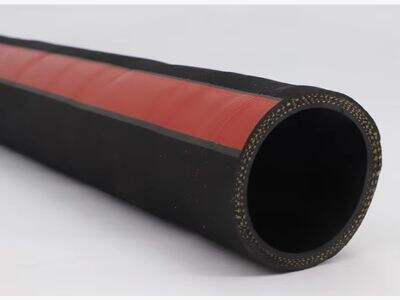How to find rubber industrial hoses that are likely to fail:
Rubber industrial hoses are widely used in industry to transport liquids, gases and a variety of materials. Yet, such hoses are susceptible to the failures which can lead to line outage and safety concerns. Leaking, cracking, ballooning, and kinking, are some of the common problems in rubber industrial hoses. These issues can be due to things like being installed incorrectly, being overused, exposure to chemicals, being too hot, or physical damage.
Causes of rubber hose line failures:
To do this, it is important to know why a rubber hose fails. Incorrect installation, for example, using a non-compatible fitting or not securing the fitting to the bike can cause leaks and splits. When hoses are used beyond their service life, such as a radiator hose used for a power steering line, the rubber can weaken, reducing the service life of the hose and increasing the likelihood of failure. The rubber will become degraded and take damage from these chemicals over time and the hose will eventually fail. Additionally, heat can damage the rubber, deteriorating it and leading to cracking and leaking. Mechanical damage such as abrasion, kinks and the like are also often a source of weakened hoses and failures.
Preventives for Rubber Hose Failures in Industries:
"Prevent rubber hose failure in your industrial setting by being proactive. The correct hose selection for the application, correctly installed following manufacturer’s guidelines and, most importantly, on-going inspection of hoses for wear and damage are critical to avoiding failure. Overuse replacement and INDUSTRIAL HOSE protectors to protect against physical damage will both help keep the hoses in service longer. Storage of hoses away from chemicals, too much sun exposure, and temperature extremes will also help prevent hoses from failing prematurely.
Rubber hose normal inspection and maintenance importance
It is important to periodically check and maintain rubber hoses to ensure health and longevity. Hoses should be examined for signs of wear, including cracks, bulges and kinks to prevent potential failures down the road. They should also inspect fittings for tightness, replace any that are damaged, and clean rubber hose frequently to keep them free of debris and contaminants, which in turn will help eliminate leaks and other concerns. Performing pressure/ flow tests on a regular basis, to measure the hose, will enable you to judge the condition of the hoses. Good maintenance - storing hoses the right way, no-over bending or twisting, and using hoses within their designed pressure and temperature – can even further extend hose operating life.

 EN
EN
 AR
AR
 BG
BG
 HR
HR
 CS
CS
 DA
DA
 NL
NL
 FR
FR
 DE
DE
 IT
IT
 PT
PT
 RO
RO
 RU
RU
 ES
ES
 TL
TL
 ID
ID
 VI
VI
 HU
HU
 TH
TH
 MS
MS
 BN
BN

